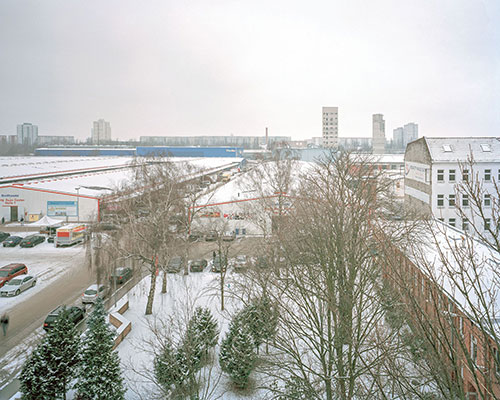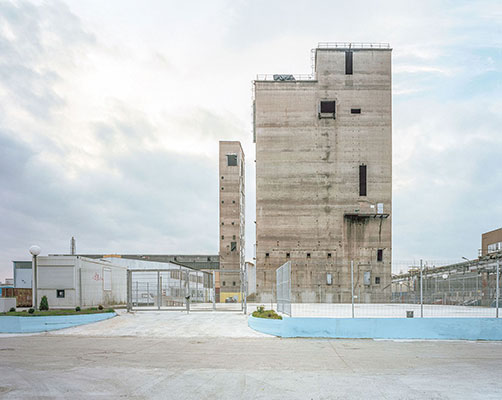Berlin, 2012-, Brandlhuber+ Georg Diez, Nikolai von Rosen, Christopher Roth, Kristof Schlüßler; Lukas Beer, Thomas Burlon, Marta Dyachenko, Markus Emde, Olaf Grawert, Dorothee Hahn, Tobias Hönig, Maria Hudl, Marjan Jobke, Janz Omerzu, Markus Rampl; HHP Berlin (fire protection); Andreas Schulz / Pichler Ingenieure (structural engineer)
San Gimignano Lichtenberg is situated between a Vietnamese wholesale market and a typical GDR Plattenbauten (prefabricated high-rise buildings). The two concrete towers, previously used as a silo and circulation tower, are the remnants of the VEB Elektrokohle Lichtenberg, a state-owned factory for graphite production. After the Berlin Wall came down, the site was abandoned until the late 1990s when the area was privatized to raise money for the city-state. The former production site has been demolished; only the two concrete towers remained due to their high cost of demolition. The towers acquired their name from their lacklustre site. By associating them with the towers of San Gimignano, Florence, their perception was altered using the power of narrative. The concept envisages the reuse of the existing fragments with little effort and intervention, mainly focusing on returning it to a legal status and adapting it to the requirements of a new program. With their 46.85 and 42.60 meter heights, the towers are legally classified as high-rises and must therefore fulfill stricter fire safety and energy conservation regulations. Due to the lack of zoning, the city wants to protect the area as a production site. Therefore, the first tower will be used as a workshop for different industries such as 1:1 prototyping of architectural units, including accompanying spaces for archive, storage, and preparation, while in contrast, the second tower is officially required to be an unheated storage space up to the first 22 meters. To avoid high costs, the silo tower will only contain two levels: the ground floor and first floor at 31.63 metres, eliminating the need for extra technical equipment such as pressure ventilation and exit doors inside the stairwell. The window apertures are left open, transforming the interior circulation into a semi-outdoor safety staircase. Following on from this approach, no new openings are added to the structure; instead, the closed ones are re-opened, which allows for more light and air circulation. The same reverence for pragmatism, economy and critical reconstruction was used in other decisions during the design process. One example was the decision to avoid a permanent water pump in the basement. As a result, 30 m2 of space was allotted to a water garden, which again blurs the building’s boundaries between inside and outside.


